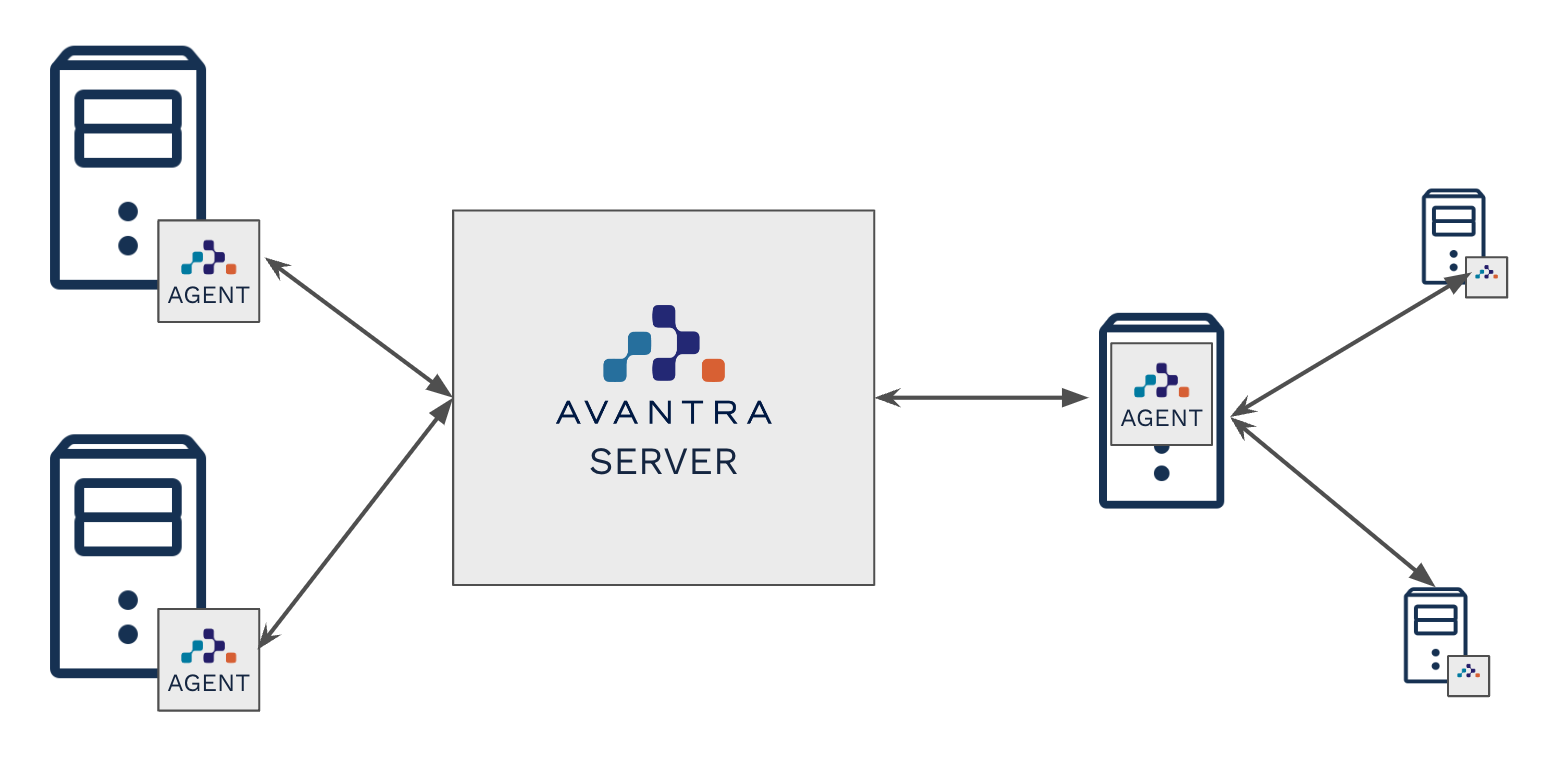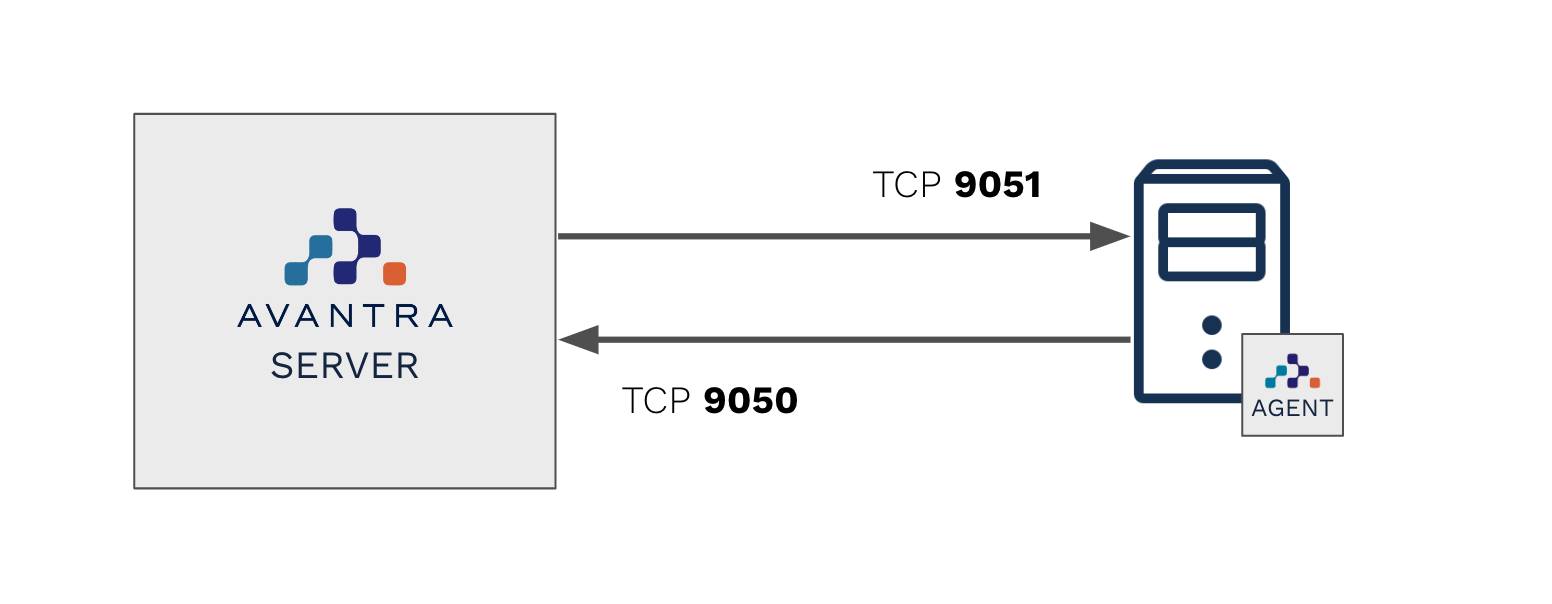How Avantra works
Avantra is designed to scale to match any environment and so it is a server and agent set up. You will have a central Avantra system which is sent information from remote agents installed on servers across your landscape. The server will consolidate all of the information received to provide you a single view of the status of your landscape.
The installation of Avantra usually follows the following steps:
-
Install the Avantra Server
-
Install the Avantra Agents on remote systems and add monitored systems into the server
-
Install the Avantra SAP Transports into your SAP Systems

The Avantra Server
The Avantra server is a Java application which is installed within your network. It can run on Linux or Windows and has a database where all of the application information is stored. Operators of Avantra will have access via a browser or via the Avantra mobile application. You will find more information about the supported platforms, databases and other recommendations in the installation area. The Avantra server is also fully multi-tenant capable which makes it ideal for use by either a single enterprise or a managed services provider.
The Avantra Agent
The Avantra agent is a light-weight java application which runs on your monitored systems. It performs the collection of observation data which is reported back to the Avantra server every 5 minutes as well as executing automations as directed by the Avantra server. Agents can also remotely monitor other systems e.g. SAP Systems or Databases where an agent cannot be installed on a host. The Avantra agent supports a wide range of operating systems (more information here). You will find more information about installing an Avantra agent in the installation area.
SAP Transports
Observation & Monitoring
The power of Avantra lies in our deep integration into the SAP world. As a certified SAP Solution, we provide comprehensive and in-depth visibility into SAP systems via our Monitoring Transports. For each system there are two monitoring transports (one with the code [workbench] and one with a locked down monitoring-only role [customizing]). All objects are delivered in namespace registered with SAP.
| Please note that the import of the monitoring transports is optional but highly recommended to ensure the most comprehensive collection of data. Without the Avantra monitoring transports a number of checks and features will be unavailable. |
Automation
For the execution of automations that allow you to interact with data and functions within your SAP system, we provide optional automation transports. Similar to the monitoring, there are two transports (one with the code [workbench] and one with a locked down automation role [customizing]). All objects are delivered in namespace registered with SAP.
| Please note that the import of the automation transports is optional and of most benefit when using Avantra Enterprise Add ins. |
Network Architecture
The network architecture of Avantra can be anything from a simple bi-directional direct connection between the server and the agent or it can be as complex as traversing NATs, reverse proxies and more. Every agent is capable of being used as a relay or proxy for other agents allowing for the setup of your Avantra system to match any organizational network and security requirements. At its most basic level, an Avantra agent receives network data from Avantra via an incoming port (default is 9051 but this is configurable) and an agent sends information to an Avantra server which also listens on an incoming port (default is 9050 but this is configurable).

For organizations with multiple network zones (i.e. the Avantra server will not be able to communicate directly with a remote agent) then Avantra agents can be configured (along with reverse proxies or NATs) as network border gateways through which communications can be relayed.